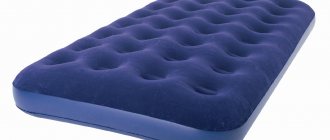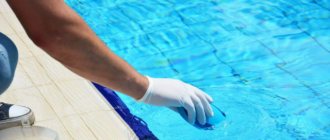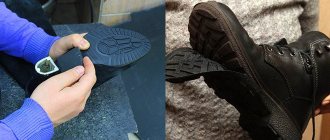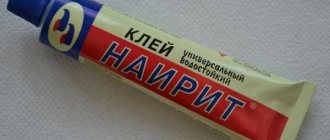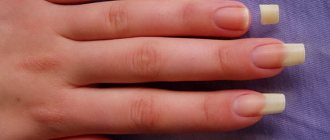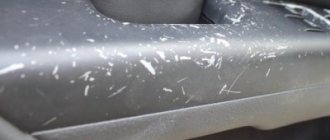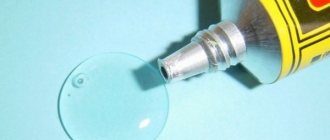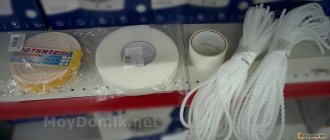Many people are faced with the problem of a leak in their pool. And it is not surprising, because recently small artificial reservoirs have become very popular and have appeared in almost every family. Therefore, we will help you figure out how to seal the pool, what materials and compositions are suitable in what cases and how to use them. Read to the end and you will learn about the technology for repairing a swimming pool with water and find tips on how to prevent the bowl from puncturing.
A swimming pool in the yard is a great attraction for the whole family Source yandex.net
Repair methods
There are methods that require additional investments, and there are those that allow you to make do with improvised materials, but each of them is only permissible in a particular situation, because everything depends on the nature and size of the damage.
What can you do?
Among the most popular means for repairing artificial reservoirs, there are several that have already been time-tested:
Special adhesive tape for swimming pools.
It is inexpensive - up to 500 rubles. The quality of the repair can be assessed as mediocre, but the tape will keep leaking for quite a long time.- Repair kits.
They are produced by global manufacturers of inflatable pools, such as Intex and Bestway. The kit includes a patch made of special PVC material (the same from which the pool itself is made), waterproof glue and, sometimes, also degreasing liquid. - Repair kits for inflatable boats.
- Glue and patch from scrap materials. The method is unpredictable, since it all depends on the quality of the glue, the patch material and the repair technique. But with the right approach, you can successfully deal with a leak in this way.
- Kits for vulcanization of car tires. The essence remains the same - special glue and patch.
Why not?
The following methods for repairing an inflatable pool can be distinguished, which will never lead to a good result and will not eliminate the leak:
- Regular stationery tape. The method is obviously ineffective, but many people start with it. The same applies to similar attempts using insulating tape, medical tape, etc.
- Superglue: you still won’t be able to seal the damage, but superglue can ruin the pool. This is especially true for children's models, which are made of thin material.
- A plastic bag instead of a patch. It will not be possible to seal the leak with a bag, since the bags have too smooth a surface, and it is almost impossible to glue them tightly to the surface of the pool, no matter how good and high-quality the glue is.
Adviсe
A specially prepared repair kit from Intex is the most suitable kit for sealing leaks. The manufacturer has selected the most effective adhesive that will adhere well to surfaces and has passed laboratory tests.
For sealing an Intex pool, kits for sealing bicycle inner tubes are also suitable. These kits also come with a high performance adhesive that is suitable for bonding PVC materials.
Do not use elastic rubber as a patch. It stretches and will lose strength over time.
Difference in sealing agents
The method of repairing a reservoir is selected based on two parameters: the type of pool (for children or adults) and the type of damage (on the wall or at the joint). Many owners of inflatable ponds also try to carry out repair work without draining the water. In some cases this is possible, but the gluing technique will differ significantly.
Along a seam or just a hole in the wall
Repairing damage to the wall is quite simple , especially if the pool is without water.
To repair pinpoint cuts and punctures, you can use any method: either adhesive tape or patches. But if the seam is leaking, then you cannot do without draining the water and additional drying of the pool.
To repair a seam, it is preferable to use special repair kits, or to carefully choose the glue and patch material. Moreover, seam repair is a longer and more labor-intensive undertaking.
It is impossible to properly seal damage at the joints with adhesive tape , only a reliable patch and a special waterproof glue, as well as preliminary degreasing of the gluing area and preliminary cleaning of the materials.
With or without water
It is correct to carry out repair work, of course, when the pool is empty, dry and clean. But it is not advisable to drain 3-4 cubic meters of water because of one small puncture. Therefore, manufacturers have come up with special means that can eliminate leaks without even draining the water.
Two methods are suitable for this: using adhesive tapes, of two different types and only in pairs with each other: one tape is glued from the outside, the other from the inside, as well as classic patch repairs.
Having drained the water and dried the reservoir, the owner of the pool has complete freedom of action, since he can use any method at his discretion. The only negative is that a filled pool allows you to quickly find the location of the leak, especially if the damage is minor.
Children and adults
Children's models, as a rule, are made of thinner material , so the use of many types of glue is contraindicated.
But adhesive tape is not the best option, since children's pools also have decorative qualities, because the child should be comfortable in it.
Therefore, there is also the task of performing repair work as aesthetically as possible. To do this, many manufacturers either produce special colorful stylized patches with special glue, or it all comes complete with the pool itself.
With an adult pool it is easier: it is larger, denser, the material is rougher and is not susceptible to corrosion by glue, and aesthetic aspects often fade into the background. Therefore, those wishing to repair a model for adults can choose a repair method based on other factors.
Additional recommendations
The instructions for any pool made of polyvinyl chloride contain a list of recommendations, adherence to which will help protect the product from possible damage. Its main provisions are:
- when unpacking the package with the pool - a thick cardboard box - there is no need to use sharp cutting objects;
- the place for the pool is prepared carefully, freeing the area from any small things that could pierce or cut its bottom - stones, twigs, shards of glass or plastic;
- It is advisable to cover the area under the bottom of the pool with a special bedding, however, a piece of linoleum, thick tarpaulin, or at least an old carpet will also work;
- Pets are not allowed near the pool;
- You should not pour more water than the required volume and pump its inflatable parts so that any of the seams do not burst;
- you cannot stand with your feet on the sides, much less jump from them (unless this is permitted by the instructions);
- on vacation, the grill or barbecue fire should be placed away from the pool;
- PVC products should be stored where there are no rodents - often it is mice that cause great damage to expensive models stored in a pantry or garage.
Another important point: it is necessary to monitor children's toys. It is advisable that there are no potentially dangerous objects in the pool. You can damage a regular, and not reinforced, as in large-sized products, PVC coating by hitting a plastic rake, a pencil, or a doll's hand.
If you carefully follow all the tips, the service life of inflatable pools is several years. Considering the ease of use, this completely pays for their cost, bringing a lot of fun to children and adults. If you have doubts about your own abilities, it is better to contact a specialized workshop to repair a damaged product.
How to find a leak?
Finding a leak in an inflatable bowl is much easier than in a frame one. You need to inflate or pump it up well and listen, the damage itself will reveal itself with a characteristic hissing sound.
But if the puncture is too small, then the sound may not be heard. Therefore, there are several reliable methods to determine the location of the leak:
- if the pool is small, for children, then it can be lowered into a tank of water, and air will come out of the puncture site, creating bubbles under the water;
- using a soap solution is the oldest and most proven method;
- a more expensive but reliable method is to use shaving foam - it is worth carefully inspecting the pool several times and lubricating it with soap suds several times rather than missing one hole; it is also worth paying special attention to the seams.
Elimination of leaks in Intex inflatable pools
There are several options for sealing an Intex frame pool. All the methods described above are more or less suitable in this case, but the problem is that often the bowls of this manufacturer are severely torn when damaged. Therefore, the best way is cold vulcanization in a car service center. The process technology is as follows:
- The surface to be treated is degreased and cleaned
- A patch is glued to the bowl material
- The joint is clamped for some time with a vice
The result of such a repair will be the most durable and reliable of all options. Moreover, for a relatively low price, they will do all the work for you.
Intex pools are best sealed by vulcanization Source yandex.net
Step-by-step instructions for sealing an empty tank
The most common ways to repair a drained pool are to use a special patch from a repair kit, adhesive tape and a homemade patch.
Before starting any work, you must make sure that all damage is found, and that the pool itself is dry and clean, and then follow specific instructions.
Patch from the repair kit
Action steps:
Degrease the leak area with acetone or alcohol.- If the pool material is dense, it is worth sanding the area a little with fine-grained sandpaper.
- Wipe the work area again with alcohol to remove dust.
- Adjust the branded patch to size using scissors.
- Apply glue to the patch in an even, thin layer.
- Apply the patch to the leak area.
- Install the press for a period of time that meets the specific manufacturer's instructions.
Adhesive tape
Repair instructions:
- degrease the puncture area;
- cut off the appropriate piece of tape (it is better to do this with a small margin);
- press it firmly to the site of injury;
- Do not fill the pool for the next 30-60 minutes, depending on the manufacturer of the tape.
Patch made from improvised means
Action steps:
- Cut a patch from a suitable material (tarpaulin, piece of old water mattress, circle or waterproof fabric) of appropriate sizes.
- Degrease the leak area.
- Using waterproof glue, glue the patch to the leak.
- Place under a press for 24 hours.
- After a day, you can additionally go over the edges of the patch with a transparent sealant.
Where to get material for patches
Intex pools always come with a repair kit. And if you don’t have Intex, or the patches have run out or are lost, then it’s okay. Repair kits are sold without pools and even patches or fabric for patches separately.
Standard repair kit: glue and transparent PVC patch for a pool of any color
In addition, suitable:
- pieces of an old swimming pool;
- old inflatable toys or circle;
- advertising banner;
- awning fabric (you can ask for scraps from a car awning workshop).
Sets of multi-colored patches, essentially these are pieces of PVC fabric
Without draining water
There is only one way to fix a leak on the inside of an inflatable pool without draining the water or drying out the pond - use adhesive tape specifically designed for this type of repair work, for example, Flex Tape.
This is done as follows:
- cut out the required piece of adhesive tape;
- carefully glued to the hole directly under water;
- This patch must be held by hand for about 5 minutes.
Other methods will help get rid of punctures only on the outside.
Repair kit for boats
Instructions:
- The patch from the kit must be additionally cleaned with sandpaper and cut to the required size.
- Degrease both the patch and the puncture site.
- Glue is applied to the damage and then to the patch.
- The patch is pressed tightly against the puncture and held there for 10-15 minutes.
Special patch for children's pool
Children's models can be sealed using a special decorative patch and ordinary sealant. This is done as follows:
- the damaged area is degreased with industrial alcohol (the use of acetone and solvents is not recommended);
- the sealant is applied to the patch in a middle layer;
- the patch is glued to the leak, the main thing is to lower the pool a little so that the air pressure does not interfere with the setting.
Preparation
For the chosen method of sealing the damaged area to be effective, preliminary preparation is required:
- draining;
- location of the structure on a flat surface;
- rubbing the hole with sandpaper to make it a rough surface for better bonding;
- degreasing the surface with acetone, nail polish remover, or another substance.
When the surface is ready, you can apply glue or make a patch.
How to prevent the problem from reoccurring?
To prevent leaks, you must:
Take care to properly install the reservoir and make sure that there are no sharp stones, tree roots or broken glass shards located nearby.- Protect the pool from pets, especially large breed dogs, which often cause a number of small holes.
- Do not leave small children unattended in the pool.
- Operate the reservoir in accordance with the rules.
- At the end of the season, carefully assemble the pool and pack it in packaging so as not to damage it during storage. It is from improper storage that the majority of punctures occur. This is especially true for large and bulky models, which are often packed in utility rooms due to their size.
The most important, interesting and useful information regarding inflatable pools is in this section.
Prevention
To avoid leaks, you should handle your pool carefully. Children's toys with sharp edges should not be used and pets with sharp claws should not be allowed into inflatable pools.
Ensure that the pool storage conditions prescribed by the manufacturer are maintained during the winter. Before storage, the container must be thoroughly dried, carefully folded without creases and packed in durable material that mice cannot chew through.
The glued patch needs regular inspection. If gradual peeling of the edges occurs, you need to choose a day and re-glue it. If this is not done in time, the patch may come off.
